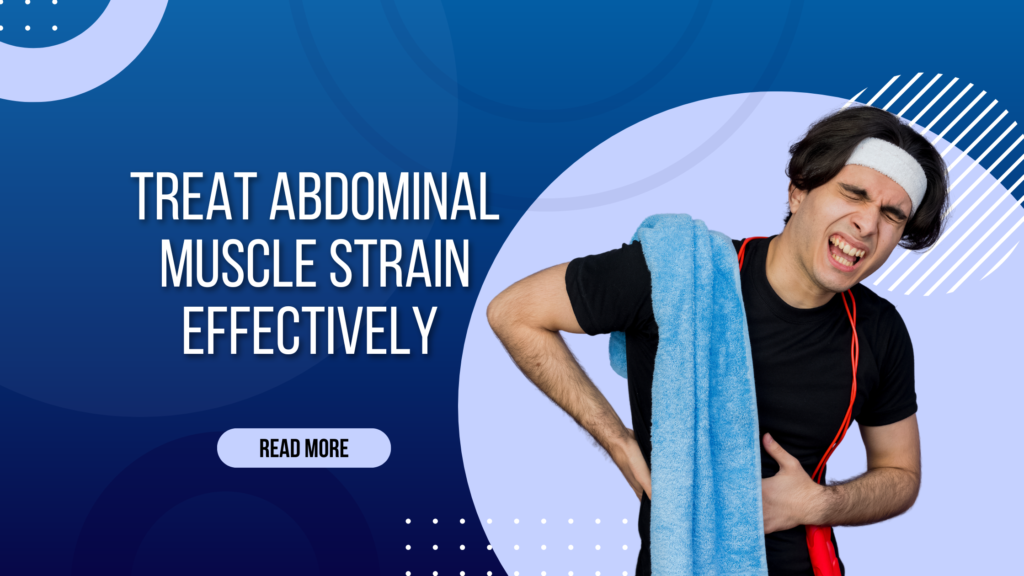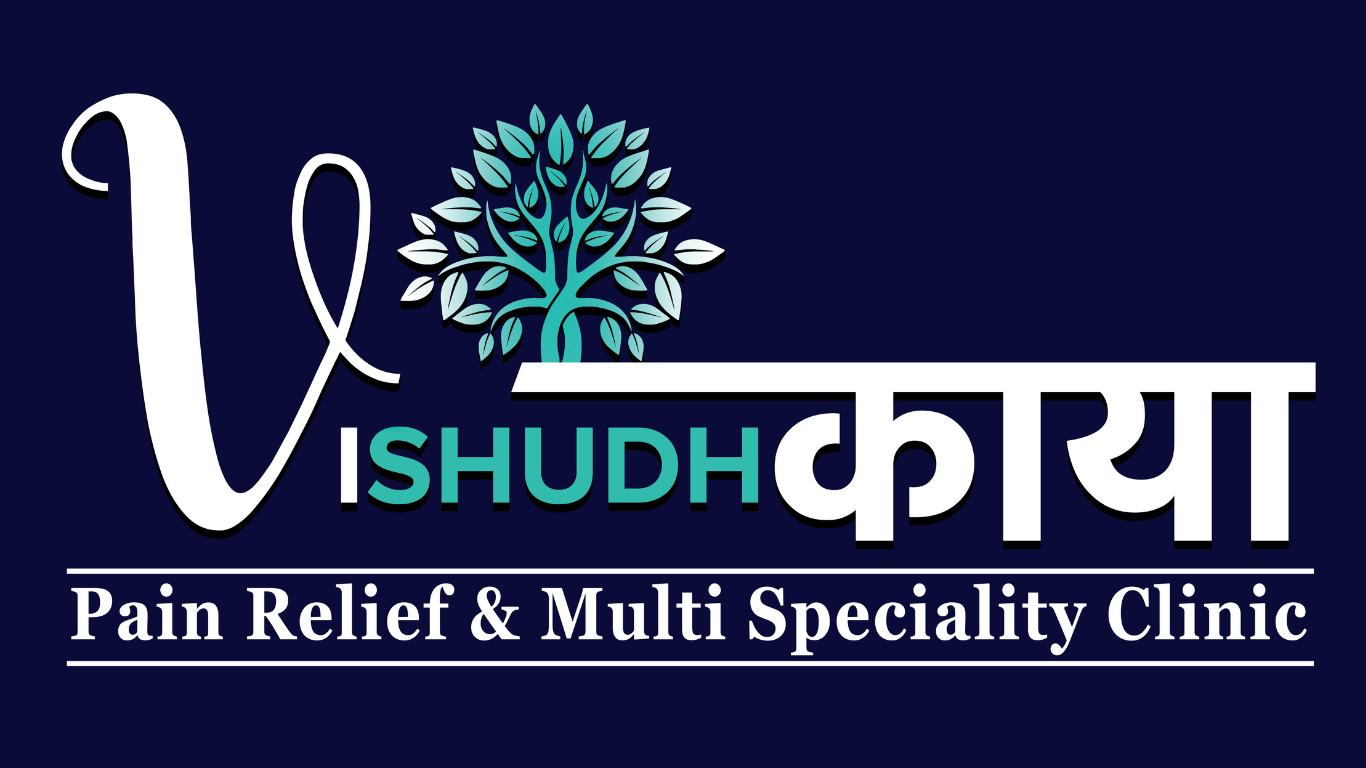Abdominal muscle strain is an injury caused by overstretching or tearing the muscles in the abdomen. It often results from intense activity, sudden motions, or incorrect lifting of things. It typically causes pain, tenderness, and difficulty with movement and may be accompanied by swelling or bruising in the injured area.
The abdominal muscles constitute the abdomen’s walls, which lie between the thorax and pelvis. The abdominal wall comprises skin, fascia, and muscle, enclosing the abdominal cavity and its organs. The abdominal wall is made up of following muscles that provide support and movement
Always listen to your body and seek medical advice for proper guidance
The external oblique originates from the lower ribs and inserts at the iliac crest and linea alba. It also assists with torso rotation and lateral flexion along with the internal oblique muscle.
The Internal Oblique starts at the iliac crest and thoracolumbar fascia, inserting at the ribs and linea alba.
The Transversus Abdominis arises from the iliac crest and lower ribs, inserting at the linea alba and pubic crest, and helps to stabilize the core and regulate intra-abdominal pressure.
The Rectus Abdominis originates from the pubic region and inserts at the xiphoid process and ribs 5-7 and helps with spine flexion and breathing
The Pyramidalis originates from the pubic bone inserts at the linea alba and helps to tighten the abdominal wall.
These muscles work together to facilitate movement, such as bending, twisting, and side bending, while also providing core stability and maintaining posture. Collectively, these muscles protect internal organs, support proper posture, and regulate pressure within the abdomen.
A “pulled stomach” is a common term used to describe a strain or injury to the abdominal muscles, which occurs when these muscles are overstretched or torn. This typically happens due to sudden, intense physical activity, improper movements, or even actions like coughing or sneezing forcefully. The sensation of a “pulling” or stretching feeling in the stomach area leads to the use of the term “pulled.” While it’s an informal phrase, the medical term for this condition is an abdominal muscle strain or tear. This injury results in pain, discomfort, and sometimes difficulty moving, depending on the severity of the strain.
Symptoms of a Pulled Stomach or Abdominal Muscle
A pulled abdominal muscle can make the abdomen feel sore and tender, especially during movement. The symptoms of a pulled stomach (abdominal muscle strain) include:
- Pain: A sharp or dull ache in the abdomen, especially when moving, stretching, or touching the affected area.
- Tenderness: Sensitivity or soreness when the area is pressed.
- Stiffness: The muscles may feel tight, making it difficult to move or perform certain actions like bending or twisting.
- Swelling or Bruising: In more severe cases, swelling or bruising may appear around the injured site.
- Muscle Spasms: You might experience cramps or spasms in the affected muscles.
- Limited Mobility: Movements such as bending, twisting, laughing, or coughing can worsen the pain.
- Localized Pain: The discomfort is usually focused in a specific area of the abdomen, depending on the muscle strain.
These symptoms can vary in severity depending on the muscle strain’s seriousness.
What Does a Torn Stomach Muscle Feel Like?
- A torn stomach muscle, or abdominal strain, usually causes sharp, sudden pain in the affected area.
- The pain is often localized and can become more intense with movements like coughing, laughing, or bending.
- The area may also be tender to touch, and bruising or swelling can occur. At first, the sensation is often described as a sharp pull or tear.
- The pain can range from mild to severe, and activities that use the abdominal muscles, such as sitting up or engaging in core exercises, can make the pain worse.
Pulled stomach muscle female symptoms –
The symptoms of a pulled stomach muscle can differ between males and females due to various factors, including hormonal differences, body structure, and lifestyle.
- Hormonal Variations: Women have higher levels of estrogen and progesterone, which affect muscle flexibility and may make them more prone to strains, particularly during menstruation or pregnancy. Men, with higher testosterone levels, tend to have more muscle mass, which can lead to stronger abdominal muscles and more intense pain when a muscle is strained.
- Body Structure: Women have a wider pelvis, which can influence the structure and function of abdominal muscles, potentially affecting how pain is felt or which muscles are strained. Additionally, the higher body fat percentage in women can sometimes lessen the intensity of the pain or cause it to feel more diffuse compared to men, who typically have more muscle mass.
- Menstruation and Pregnancy: Hormonal changes during menstruation can cause bloating and discomfort, which may mimic or exaggerate the feeling of a pulled stomach muscle. During pregnancy, as the body stretches to accommodate a growing baby, abdominal muscles may become more vulnerable to strains, leading to different symptoms like cramping or localized pain.
- Pain Perception: Men and women may perceive pain differently due to hormonal influences and individual pain tolerance, which can affect how they experience and report the severity of a pulled stomach muscle.
- Activity Levels: The types of physical activities men and women engage in might also play a role in how abdominal strains manifest. Men may engage more in muscle-building exercises, which could result in different muscle strains, while women may experience strains from activities that focus more on flexibility or core strength.
In conclusion, while the symptoms of a pulled stomach muscle such as pain, tenderness, and stiffness are similar for both genders, differences in hormones, body structure, and reproductive factors can influence how the symptoms appear and are experienced.
Can You Exercise with a Pulled Abdominal Muscle?
Exercising with a pulled abdominal muscle is generally not advised, especially in the early stages of the injury. Physical activity can aggravate the strain, intensify pain, and slow down the healing process. The muscles need sufficient time to recover, and exercising prematurely can worsen the injury or lead to other problems in the body. Rest is essential for proper recovery, and only once the pain eases should light activity be considered. Gradual reintroduction of movement and low-impact exercises is recommended, but intense core exercises should wait until full recovery.
Rehabilitation Exercises for Abdominal Muscle Strength
Rehabilitation exercises for an abdominal muscle strain should be approached gradually, focusing on gentle stretching, strengthening, and mobility. Here are some exercises to aid recovery:
1. Rest and Gentle Stretching (Acute Phase):
- In the first few days after the injury, it’s important to rest and allow the muscle to heal. However, gentle stretching can help reduce tightness.
- Gentle Seated Stretch: Sit in a chair and slowly bend to one side, stretching the muscles along the side of your abdomen. Hold for 10-15 seconds, then repeat on the other side. This can help relieve mild tension in the abdominal area.
Cat-Cow Stretch (Gentle): On hands and knees, gently move between arching your back up (like a cat) and dropping your belly down toward the floor (like a cow). This stretches and mobilizes the spine and abdominal muscles. Keep the movements slow and controlled
2. Diaphragmatic Breathing
Breathing exercises help strengthen the core and abdominal muscles without putting strain on them.
3. Pelvic Tilts
Pelvic tilts help activate and strengthen the core muscles without straining the abdominal muscles.
4. Bridge Exercise
The bridge exercise strengthens the glutes and lower back muscles while also engaging the abdominal muscles gently.
5. Bird-Dog (Modified)
This exercise helps improve balance and strengthen the core muscles without overstretching the abdominal muscles.
6. Side Lying Leg Lifts
This exercise targets the oblique muscles and helps gently strengthen the abdominal area.
7. Plank (Modified)
Once the muscle strain has healed, the plank can help strengthen the entire core.
8. Progressive Core Strengthening
As your recovery progresses, you can slowly incorporate more challenging core exercises like full planks, leg raises, and stability ball exercises. Start with lower-intensity movements and gradually build up as strength and confidence return.
Start with gentle exercises and slowly increase intensity as you heal. Stop and rest if you feel sharp pain. Regular practice will help rebuild strength and flexibility. It’s recommended to consult a healthcare professional or physical therapist for proper guidance.
How to Treat an Abdominal Muscle Strain?
To treat an abdominal muscle strain, start by resting and avoiding activities that stress the affected area, allowing the muscle to heal. Apply ice to the injury for 15-20 minutes every 1-2 hours during the first 48 hours to reduce swelling, and consider using a compression wrap or abdominal support belt to minimize swelling. Over-the-counter pain relievers can help manage pain and inflammation. After 48 hours, use heat to relax the muscles and promote blood flow. Once the pain subsides, begin gentle stretching and strengthening exercises, but be cautious not to overexert the muscle. If pain persists or worsens, consult a healthcare provider. After recovery, focus on strengthening exercises and proper warm-ups to prevent future strains.
How to Treat an Abdominal Muscle Strain?
If a stomach muscle strain is ignored, it can increase pain and lead to a longer recovery, possibly causing tendonitis and restricting movement. The long-term effects depend on the severity of the strain. Grade one and two strains usually heal with rest and physiotherapy, while a grade three strain may need surgery, followed by physiotherapy to help with recovery.
A stomach strain usually doesn’t cause long-term issues if treated correctly. However, if not healed properly, it can lead to persistent pain, weakness, muscle imbalances, and a higher risk of re-injury. Weak abdominal muscles can also affect posture and reduce physical performance. To prevent these problems, it’s important to rest, rehabilitate gradually, and avoid intense activity too soon. Seeing a healthcare provider helps ensure proper healing and reduces the risk of complications.
Abdominal Strain Treatment Services at Vishudh Kaya Chandigarh
At Vishudh Kaya, we offer personalized and individualized treatment plans that are designed to meet the unique goals and needs of each patient. We recognize that every person is different, which is why we tailor our approach to ensure it aligns with your specific health objectives, whether it’s recovery, pain relief, or general wellness.
Our team of skilled professionals is dedicated to assisting you throughout your healing process. By assessing your condition and goals, we develop a treatment plan that best supports your individual needs. With a focus on providing high-quality care and personalized attention, we strive to make your recovery as effective and comfortable as possible, helping you achieve the best outcomes for your health and well-being.
Conclusion
In conclusion, an abdominal strain can be treated with rest, ice, compression, and pain relief during the first few days. After 48 hours, applying heat and performing gentle stretches can support healing. It’s essential to ease back into physical activity and seek medical advice if the pain continues. Strengthening the muscles and warming up properly can help avoid future strains. So, if you are suffering from a pulled stomach, feel free to visit our clinic at Vishudh Kaya Multi Speciality Pain Relief Clinic Kharar.
Frequently Asked Questions
How long does a strained stomach muscle take to heal?
An abdominal muscle strain or pull is an injury caused by overstretching or tearing of the abdominal muscles. It is common in athletes or individuals involved in intense physical activity. With consistent physiotherapy, a mild strain can heal within a few weeks, while a more severe strain may take 4 to 6 weeks to fully recover.
The healing time for a strained stomach muscle depends on the severity of the injury:
Mild strain (Grade 1): Usually heals within 1 to 2 weeks with rest and proper care.
Moderate strain (Grade 2): Typically requires 3 to 4 weeks of rest and physiotherapy.
Severe strain (Grade 3): It may take 4 to 6 weeks or longer to fully heal, and might require more intensive treatment, including physiotherapy or even surgery in some cases.
The recovery time can vary depending on how well the injury is managed and the individual’s overall health. Proper rest, physiotherapy, and avoiding aggravating activities are key to a faster recovery.
How do I know if my pain is muscular or nerve?
Muscular pain is usually a dull ache or soreness in the muscle, aggravated by movement and relieved with rest or heat. Nerve pain is sharp, burning, or shooting, often radiating along a nerve and may cause tingling or numbness. Unlike muscular pain, nerve pain often persists and doesn’t improve with rest. If you’re uncertain, it’s best to consult a healthcare professional for an accurate diagnosis.
What does abdominal muscle strain feel like?
An abdominal muscle strain causes sharp or sudden pain in the stomach area, which worsens with movement, coughing, or laughing. The affected area may feel tender, tight, and sometimes swollen or bruised. The intensity of pain depends on the severity of the strain.
What are the three symptoms of a muscle strain?
The three main symptoms of a muscle strain are:
Pain: A sharp or aching pain at the site of the strain.
Swelling: The injured area may become swollen.
Stiffness: Difficulty moving the affected muscle due to tightness or reduced flexibility.
What is the fastest way to heal a muscle strain?
To heal a muscle strain quickly, rest the injured area, apply ice for 15-20 minutes every few hours, and use compression to reduce swelling. After the pain subsides, gently stretch the muscle and consider physiotherapy for rehabilitation. Avoid intense activity until fully healed.


